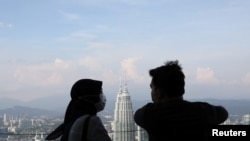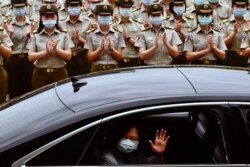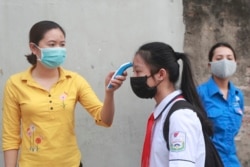In Malaysia, like much of the world, coronavirus infections began rocketing in early March and eventually topped 8,800. By early June daily caseloads had fallen to around 10 to 20 and they’ve never resurged.
Coronavirus infections in the United States also began a steep climb in early March but instead of falling in June surged upwards to some of the country’s worst ever.
Malaysia is just the latest success story in East Asia. Most of its neighbors have stopped the spread on COVID-19 because of several advantages missing in the United States, analysts say. Asians proactively protect one another from disease and trust government officials, who in turn take seriously the risk of respiratory disease spilling over from China.
“I think it’s cultural,” said Alan Chong, associate professor at the S. Rajaratnam School of International Studies.
“People here are still collectivist in orientation of thought, meaning even if a certain government is despised, they will still listen to instructions especially if they are reasonable,” Chong said. “The idea of stay at home, people will obey because the collective good is explained to them in a self-evident way.”
The two sides of the Pacific Ocean might normally go separate ways, but in April U.S. Secretary of State Michael Pompeo described the 10-member Association of Southeast Asian Nations as “strategic partners” in responding to COVID-19 and called for collaboration.
In mid-July the U.S. House Foreign Affairs Committee vice chairman expressed appreciation to the Southeast Asian bloc for sharing “lessons and experiences” in controlling the disease, Asian media outlets reported. U.S. President Donald Trump had thanked the Vietnamese prime minister in May for supplying medical gear and giving facemasks to the United States.
Americans have defied stay-at-home orders and urged their removal, sparking new waves of infections since June. Some citizens of the country still avoid facemasks. Trump called the mouth covers “patriotic” only this week, after months of resistance.
Confucianism, a cultural force in East Asia that advocates duty to society over individual needs, has been cited to explain Asian responses to COVID-19 and lack of cohesion in the United States, according to March 31 blog post by the Wilson Center policy forum.
In Hong Kong, antigovernment protesters active over the past year suspend their activities when virus cases rise as they have over the past month.
Taiwanese regularly wear facemasks in public even though COVID-19 shows no sign of community transmission. Taiwan’s health minister Chen Shih-chung was so respected for his handling of the virus this year that citizens crafted pop-up cartoons and doll-sized effigies in his image.
Ethnic Malay cultures in Malaysia and Indonesia promote banding together against common threats, Chong said.
Within a week of Malaysia declaring its lockdown, some 95% of the population had complied with the order, said Ibrahim Suffian, program director with the polling group Merdeka Center in Kuala Lumpur.
“I think many Malaysians wouldn’t be able to understand what goes on in the minds of many Americans, because I think in the case of Malaysia the trust in the experts and trust in the bureaucracy is still relatively high, whereas perhaps in the U.S. there’s this issue of trust in government,” Suffian said.
“Most people didn’t question, and in fact most people felt the government lifted the lockdown too early,” he said.
Governments in Asia need not always remind people to wear masks, keep distance and stay home.
“It’s not just that the commander in chief orders that everyone wears a mask,” said Frederick Burke, Ho Chi Minh City-based partner with the law firm Baker McKenzie. In Vietnam, he said, “it’s a mentality. People have to protect each other, it’s not to protect yourself, the mask, it’s to protect others in case you’re a carrier.”
Vietnam has reported just 401 coronavirus cases and no deaths.
“Maybe they’re sweeping some things under the rug, but in general those numbers have been demonstrated to be accurate,” said Derek Grossman, senior analyst with the Rand Corp. research institution in the United States. Some Americans suspect that Vietnam as a communist state suppressed freedoms to stop COVID-19 and covered up caseload data.
Like peers in much of East Asia, Vietnamese officials also reacted in early 2020 by curtailing visitors and tracing the contacts of sick people. China, where the coronavirus was discovered, came under particular scrutiny among border nations.
Authorities in Malaysia learned too from experience controlling the SARS atypical pneumonia outbreak in 2003 and the H1N1 flu six years later, Suffian said. China was an early transmitter of both diseases. Taiwan, Singapore and South Korea learned from the same.
The U.S. government saw COVID-19 before it exploded in the country but didn’t move to stop it, the Wilson Center blog post says. One government health agency had been defunded and another disbanded, it notes. In Asia, the post says, experts convinced their governments to act after SARS.










